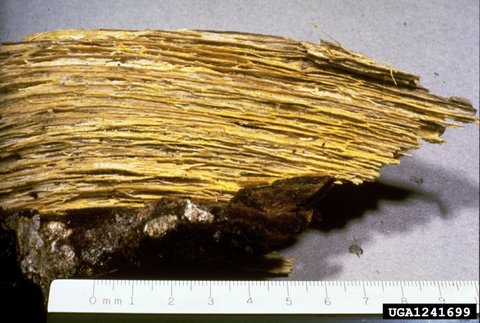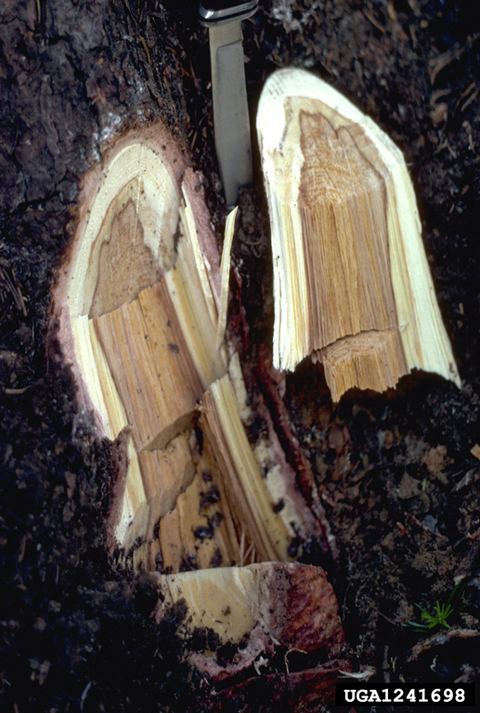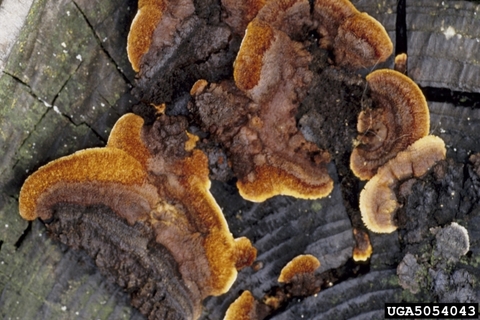Quick facts
- The disease is a fungal root rot that enters through wounds on the roots or base of the tree.
- Black, white and Colorado blue spruce trees are commonly infected.
- Larch and Norway spruce can also become infected.
- Infected trees have reduced growth and commonly break or fall over in storms.
- Protect trees from wounding.
- Remove infected trees and replace them with a deciduous tree.
How to identify Tomentosus root rot
- Heartwood of infected roots and trunks is reddish-brown at first.
- As infection continues “white pocket rot” develops. Decayed wood has long pockets or pits, and may look honeycomb-like in cross section.
- Infected trees have reduced growth and thin canopies, produce large amounts of cones and eventually die.
- Infected trees frequently break, or fall over during storms.
- Mushrooms appear around the base of the tree in late summer. These mushrooms are velvety brown above and porous and buff colored below.
Trees affected by Tomentosus root rot in Minnesota
Trees commonly affected by Tomentosus root rot in Minnesota:
Black spruce (Picea mariana)
White spruce (Picea glauca)
Colorado blue spruce trees (Picea pungens)
Trees occasionally affected by Tomentosus root rot in Minnesota:
Larch (Larix laricina)
Norway spruce (P. abies)
How does Tomentosus root rot survive and spread?
- This disease is caused by the fungus Onnia tomentosa.
- Spores from the fungus that causes Tomentosus root rot can infect wounds in roots or in the wide base of the tree, known as the root flair.
- The fungus can also spread from infected roots or tree stumps to healthy roots that grow close by. This often results in a cluster of infected trees.
- Once infected, wood in the roots and trunk begin to discolor and decay.
- Eventually, infected roots die.
- When the roots die, the needles and branches do not get the needed water and nutrients.
- Growth slows and the canopy looks thin and yellow.
- In time, the tree dies.
- Often, infected, but living, trees fall over or break in a storm due to trunk and roots weakened by decay.
- The fungus can survive in the root system and stump of an infected tree for over 30 years and will infect new trees planted nearby.
How to manage Tomentosus root rot
- Mulch the soil around the base of all spruce trees to prevent injury from lawn mowing or other garden equipment.
- Have infected trees assessed by a certified arborist to determine their structural stability.
- Remove unstable trees to prevent damage that might occur if the tree falls.
- Remove the stump and as many roots as possible of infected trees.
- Do not plant spruce or other susceptible conifers at a site where trees have been infected with Tomentosus root rot. Most deciduous trees are immune to the disease and can be safely planted.
Reviewed in 2024




